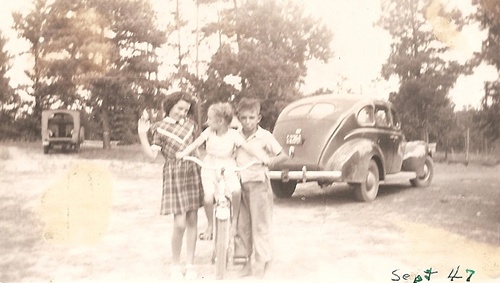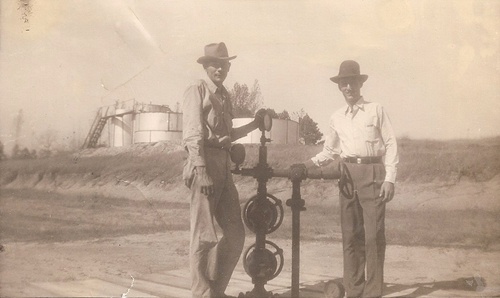| |
Christmas
Trees in the Oil Patch
by N. Ray Maxie |  |
A
great number of accounts have been written about this Christmas tree, but here
is my first. May you find it a little different view from my personal observation.
It was along about 1945 - ‘48, when I was getting old enough to sit up
and take notice.
A large part of the expansive Rodessa Oilfield reached
far over into NE Texas. It’s name was derived from Rodessa, Louisiana, the field’s
origin. In geological terms, it became known as “the Rodessa sand”, a layered
formation containing oil and discovered at about six thousand below the earth’s
surface. Relatively shallow by today’s deep well standards. Although other fields
are found much more shallow, too.
There, my father worked many years and
retired after moving up through the ranks. I recall dad with his blue denim “Dickie”
overalls and khaki shirt most always smelling like crude oil, grease or casing
head gasoline. All are most marvelous and welcome smells for those of that bent
and era. Mother often needlessly complained about having to wash those oily cloths
and tried diligently keeping dad as clean as possible. It wasn’t easy, I know,
along with we three kids. |
 |
| Ray
and 2 sisters in the oil field with bicycle - Sept. 1947 |
As
a toddler and an early adolescent, I naturally became excited each year around
Christmas time. My first memory was of the little pine or cedar Christmas tree,
cut from the nearby woods, all decorated in the living room of our meager four
room oil camp shotgun cottage. The pretty, colorfully wrapped gifts; the
toys, candy, cookies, pies and the rare, but welcome smells and activity meant
Santa was getting pretty near to our house. The excitement and anticipation made
we children happy.
Growing older, I learned that there was a “forever”
Christmas tree a short distance from our house. Everyday looking out my bedroom
window I could see the tree and it sure did not look like the holiday tree I had
become accustomed to. “What! That thing out there is a Christmas tree?”
It was a mass of metal, usually painted orange or “steel” gray
that only a highly experienced oil field operator could master. There were several
such trees scattered about the area of my father’s work.
My standing instructions
were to always keep a good distance away from any of the oilfield equipment. And
I usually did, unless of course, accompanied by my dad. |
 |
| Ray's
father R. A. Maxie (L) and uncle W. O. Ridgway with 1930's & '40's Christmas tree |
An
oil patch Christmas tree is a configuration of steel pipes, elbows, collars, tees,
nipples and several large wheel type gate valves. Thereupon will be mounted about
two or three high-pressure gauges for reading the gas pressure. That assembly
stands about five to six feet tall and may be three to four feet wide at the outermost
points. The structure serves at the gas well-head to control the flow of natural
gas and direct it in several different direction. It handles only the gas and
not oil.
© N. Ray Maxie
"Ramblin'
Ray" December
13, 2008 Column
piddlinacres@consolidated.net
More Texas
| Online Magazine | Texas
Towns | Features | Columns
| Ramblin' Ray | |
|